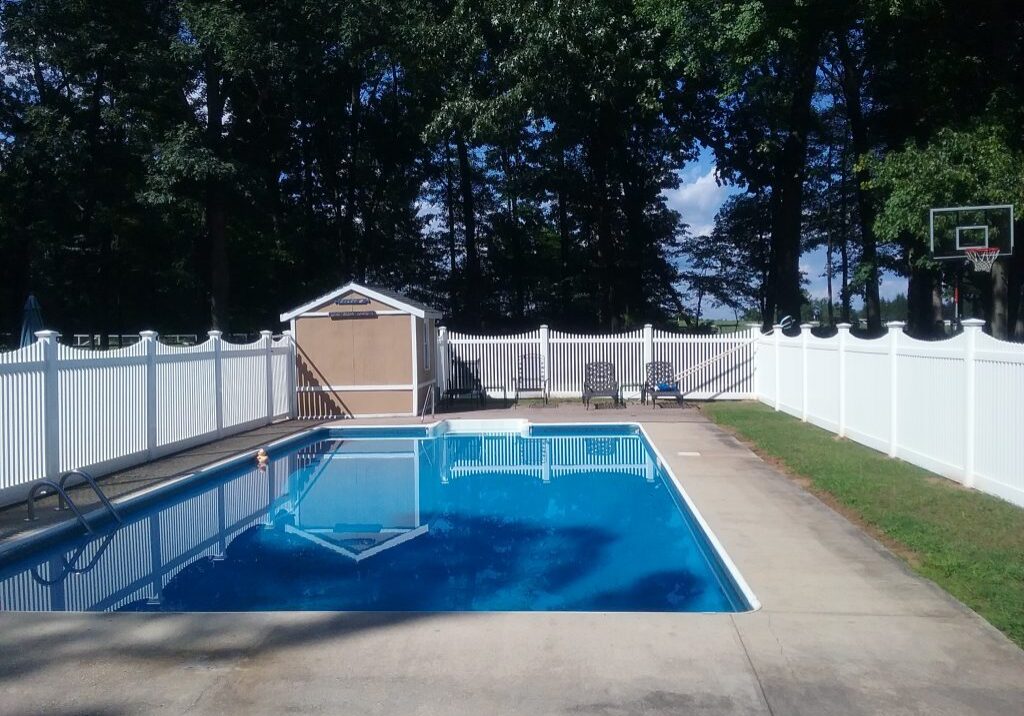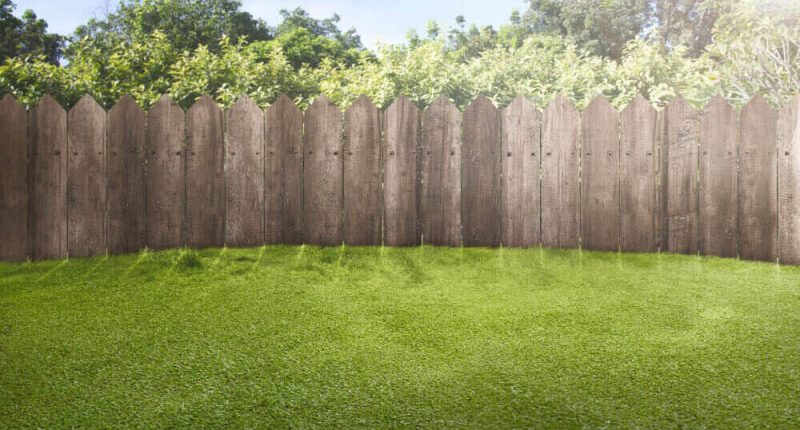All Categories
Featured
When securing your home, selecting the best fence elevation is important for both privacy and safety. The elevation of your fence plays a substantial duty in establishing just how effective it will certainly be at securing your home or organization from intruders. While a tall fencing might feel like the best alternative, the ideal elevation relies on numerous variables, consisting of protection demands, local regulations, and the products made use of. Listed below, we'll detail essential factors to consider to help you select the ideal fencing height for optimum safety.
![]()
If you live in a community regulated by a property owners' association (HOA), you must likewise evaluate any type of specific standards they have for fence elevation, design, and products. Following these laws ensures you stay clear of lawful concerns and maintain a great relationship with your neighbors.
Taller fencings are much more difficult to range and can dramatically reduce the probability of burglaries. Including attributes like pointed tops, barbed wire, and even electrical fencing can better enhance the obstacle's safety and security. A fence that reaches 8 feet or higher is commonly effective at stopping most individuals from conveniently leaping over it.
![]()
Wood Fences: While wooden fences supply privacy, they can be very easy to climb, specifically if there are no anti-climb functions. For maximum safety, consider a wooden fencing that's 6 to 8 feet high with sharp tops or trellis extensions that make it more challenging to scale. Chain-Link Fences: Chain-link fencings are commonly a lot more long lasting and affordable than wood, and they can be constructed to the required height for safety. To increase prevention, think about including barbed or razor cord ahead. These functions inhibit climbing and make the fence extra difficult to violation. Wrought Iron Fencings: Wrought iron fencings are commonly utilized for high-security functions since of their strength and durability. Their upright bars make it difficult to climb, and they can be built to 6 to 8 feet high with extra spikes or attractive anti-climb features to further protect the border. Plastic Fencings: Plastic is an exceptional selection if you require a strong, private fencing, however like wood, vinyl fencings might need extra height or safety and security attributes to hinder climbing. Choose a fencing that goes to least 6 feet high to make sure privacy and safety and security. Each product provides different benefits in regards to appearances, toughness, and maintenance, so it is essential to consider your specific requirements and preferences when choosing a fence.
Anti-Climb Features: Setting up sharp or sharp tops, trellis extensions, or protection spikes at the top of the fence makes it a lot more challenging for anyone to scale the fence. These attributes function as a solid deterrent to potential intruders. Barbed or Razor Cable: Including barbed cord or razor cable at the top of your fence boosts protection significantly. This is typically utilized in high-security locations, such as industrial buildings, yet can additionally be a good choice for properties in high-risk locations. Electric Fence: For high-level safety and security, you might desire to think about including an electrical fence to your building. Electric fencing, when installed correctly, can create a strong deterrent while remaining reasonably discreet. It supplies a mild shock to anybody who attempts to climb the fencing or touch. Incorporating elevation with these added functions makes certain that your fencing offers the highest level of security.
Balancing the requirement for personal privacy and safety and security while preserving the visual allure of your property can aid you choose the best elevation and product for your fence. See to it that your fence complements the general style of your home and does not adversely influence the visual charm.
![]()
By very carefully taking into consideration all these aspects, you can produce a protected, private, and attractive border around your home that uses both satisfaction and defense.

- Understand Local Laws and Zoning Laws. The initial action in picking your fence elevation is to acquaint on your own with regional regulations. Commonly, front lawn fencings are limited to 3 to 4 feet, while yard fences can be as high as 6 to 8 feet or more.
If you live in a community regulated by a property owners' association (HOA), you must likewise evaluate any type of specific standards they have for fence elevation, design, and products. Following these laws ensures you stay clear of lawful concerns and maintain a great relationship with your neighbors.
- Identify the Desired Degree of Safety. The degree of protection you require is a significant consider establishing the perfect fence height. If you're wanting to deter casual invaders or maintain children and pets inside the lawn, a fencing between 4 to 6 feet may be adequate. However, for greater safety and security needs-- such as securing against thiefs or guaranteeing safety and security in high-crime areas-- you might require a taller fencing. A fencing elevation of 6 to 8 feet is usually suggested for optimal protection.
Taller fencings are much more difficult to range and can dramatically reduce the probability of burglaries. Including attributes like pointed tops, barbed wire, and even electrical fencing can better enhance the obstacle's safety and security. A fence that reaches 8 feet or higher is commonly effective at stopping most individuals from conveniently leaping over it.
- Pick the Right Product for Your Fencing. The product of your fencing plays a crucial role in its capacity to offer safety. While taller fencings are better for security, the kind of material you make use of can impede the performance or improve of the height. Here are some prominent fence products for security:

Wood Fences: While wooden fences supply privacy, they can be very easy to climb, specifically if there are no anti-climb functions. For maximum safety, consider a wooden fencing that's 6 to 8 feet high with sharp tops or trellis extensions that make it more challenging to scale. Chain-Link Fences: Chain-link fencings are commonly a lot more long lasting and affordable than wood, and they can be constructed to the required height for safety. To increase prevention, think about including barbed or razor cord ahead. These functions inhibit climbing and make the fence extra difficult to violation. Wrought Iron Fencings: Wrought iron fencings are commonly utilized for high-security functions since of their strength and durability. Their upright bars make it difficult to climb, and they can be built to 6 to 8 feet high with extra spikes or attractive anti-climb features to further protect the border. Plastic Fencings: Plastic is an exceptional selection if you require a strong, private fencing, however like wood, vinyl fencings might need extra height or safety and security attributes to hinder climbing. Choose a fencing that goes to least 6 feet high to make sure privacy and safety and security. Each product provides different benefits in regards to appearances, toughness, and maintenance, so it is essential to consider your specific requirements and preferences when choosing a fence.
- Add Protection Attributes for Additional Protection. While elevation is important, including additional security features to your fence can increase its performance. Think about the adhering to additions:
Anti-Climb Features: Setting up sharp or sharp tops, trellis extensions, or protection spikes at the top of the fence makes it a lot more challenging for anyone to scale the fence. These attributes function as a solid deterrent to potential intruders. Barbed or Razor Cable: Including barbed cord or razor cable at the top of your fence boosts protection significantly. This is typically utilized in high-security locations, such as industrial buildings, yet can additionally be a good choice for properties in high-risk locations. Electric Fence: For high-level safety and security, you might desire to think about including an electrical fence to your building. Electric fencing, when installed correctly, can create a strong deterrent while remaining reasonably discreet. It supplies a mild shock to anybody who attempts to climb the fencing or touch. Incorporating elevation with these added functions makes certain that your fencing offers the highest level of security.
- Consider Personal Privacy and Aesthetic Preferences. While safety ought to be your main issue, it's additionally crucial to take into consideration the aesthetic appeal of your fencing. Tall fences might supply safety and security, however they can occasionally show up imposing or hostile. If privacy is a worry, a strong timber or vinyl fencing can use both protection and seclusion, while a functioned iron fencing uses security with an open view.
Balancing the requirement for personal privacy and safety and security while preserving the visual allure of your property can aid you choose the best elevation and product for your fence. See to it that your fence complements the general style of your home and does not adversely influence the visual charm.

- Last Thoughts on Fencing Elevation and Protection. Selecting the right fence height for optimal safety includes stabilizing numerous elements, consisting of neighborhood regulations, the degree of safety needed, the product of the fence, and added safety and security features. Generally, a fence elevation of 6 to 8 feet is ideal for the majority of property buildings, with taller fencings providing an included layer of security for high-risk areas. Incorporating the appropriate height with a sturdy, climb-resistant product and added safety and security attributes will certainly help guarantee that your fence successfully secures your home. When making your last choice., constantly examine neighborhood codes and consider your privacy and visual choices.
By very carefully taking into consideration all these aspects, you can produce a protected, private, and attractive border around your home that uses both satisfaction and defense.
Latest Posts
Check Out the Premier Auto Repair Offers in Montclare, Chicago
Published May 24, 25
1 min read
Join Your Financial Partner at WyHy – Key Tools for Your Financial Success
Published May 24, 25
1 min read
Explore WyHy FCU – Top Benefits for Your Financial Success
Published May 23, 25
1 min read
More
Latest Posts
Check Out the Premier Auto Repair Offers in Montclare, Chicago
Published May 24, 25
1 min read
Join Your Financial Partner at WyHy – Key Tools for Your Financial Success
Published May 24, 25
1 min read
Explore WyHy FCU – Top Benefits for Your Financial Success
Published May 23, 25
1 min read